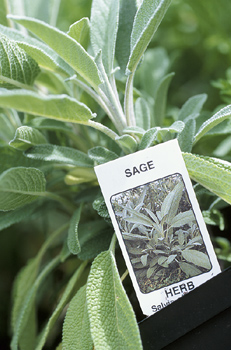How to Grow Herbs
Learning how to grow herbs is useful in a variety of ways: as spices, flavoring or in home remedy usages. Many people buy their herbs from a grocery store or local market, though others choose to grow their own herbs in their backyard or even inside their houses. Growing herbs isn’t difficult, if you take the time to read a little bit about how to grow herbs at home.
Growing Herbs at Home
Growing herbs at home is a great way to spruce up your house with some organic life, which has benefits you might not be aware of. According to NASA, indoor plants not only take carbon dioxide out of the air in your home, but plants may absorb benzene, formaldehyde and trichloroethylene. While herbs and other plants won’t take all the pollutants out of your house, it’s logical to assume plants clean up the air in your home.
Combine that with all the other uses herbs have in your life and you have some very compelling reasons for growing herbs at home. Herbs come in many varieties of species and make great personalized gifts for your friends and family.
Some of the more rare herbs are expensive when purchased from a grocery or specialty store. By learning how to grow herbs yourself, you can save money, especially if you’re interested in making your own tinctures or spices at home. Although growing herbs costs money for seeds and time for growing, that’s a startup cost and you’ll continue to grow some herbs year after year, without making an additional investment.
Getting Started With Herbs
When learning how to grow herbs, it’s important to familiarize yourself with the many different herb varieties, before delving into strategies for growth. Since herbs are plants, many herbs follow the same growth cycles and planting tips as other planting topics we’ve discussed.
Some herbs are grown for consumption in dishes, such as basil or oregano. Other herbs, like aloe vera, have little or no culinary use, but are cherished for their herbal medicinal properties. Aloe vera plant, for instance, gives respite from a variety of ailments, such as sore muscles or sun burns.
A simple set of required tools is all you need to begin your planting project. Depending on the season and the climate you live in, grow herbs outside in your garden or indoors in pots or plant containers. Either way, the following items are indispensable in most cases.
- Spade
- Watering can
- Pot or container for plants
- Fertile Soil
- Soil enrichment product or manure
- Seeds
Growing Your Herbs

How to Grow Herbs
You want an environment to grow your herbs that consistently receives at least half a full day’s worth of sunshine. Organizing your herbs by categories is helpful. For instance, grouping perennials with other perennials and annuals with other annuals helps your garden be more consistent and organized.
Also, grouping edible herbs with other edible herbs and medicinal herbs together is a wise idea, for the sake of cleanliness. That way, you know exactly where your edible herbs are at.
Planting Herbs
Nurturing existing herb samples speeds the growth process, instead of starting simply from seeds. You need an existing herb to do this, so unless you have a friend who grows herbs, you’ll need to go to a nursery. If you have a nearby plant nursery, you should be able to find all the basic herbs to plant.
More exotic herbs are harder to find in your area or may be too expensive for your budget, but you should start out simple, anyway. Remember, seeds work perfectly fine, but you’ll have to wait longer to see results.
Organizing Your Herbs
Keep your patches of different herbs organized according to like-species. Surrounding some plants with a border of chives and parsley, for instance, distracts bugs where large patches of one herb might otherwise be devastated quickly.
Most herbs require a rich soil mixture. Try a ratio of ½ soil and ½ soil enhancement product for your initial base.
Don’t bury seeds or plant parts for most herbs too deep. 2” to 3” underneath the soil should suffice for many species. Whether or not you’re planting outside in a personal garden or inside in containers, soil choice makes a large difference in the success, growth development and interaction of your herbs.
That’s especially true if you’re growing a mixture of different herbs together, since some herbs fair better outside during certain times of the year, while others don’t. Some herbs need more sunlight than others. Generally, though, herbs tend to share requirements within the same ballpark.
Play around with the lighting and soil and see which herbs work best under which conditions. Don’t be afraid to move an herb to better light or richer soil, if it isn’t doing well.
Master the Basics – Learn the Specific Later
Additional research on the individual herbs you are interested in planting wouldn’t hurt, once you start to grow your own herbs. Once you become more familiar with the growing process, the species in your garden and the overall herbal lingo, cross-reference requirements for each species.
Also remember that many edible herbs need to be pinched regularly for cooking purposes, because this enhances the flavor concentration and intensity. Make sure to supply at least an inch of water to the herbs every week. Keep in mind, however, that the dryer you’re able to keep most herbs, the better tasting they are going to be.
Depending on your mix of species, you might get away with less than an inch of water, though experience and experimentation is best to help you figure out the right requirements, when you’re learning how to grow herbs.
